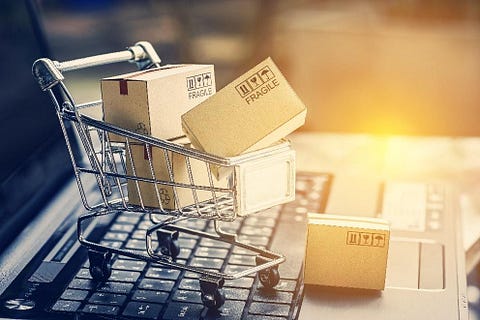Today, we see millions of people browsing through the internet to buy products and services online, leading to an exponential rise to online shopping. With the rising need for contact-less shopping through e-shopping portals during the COVID-19, we are also witnessing a shift in consumer perception towards online shopping.
As per IBEF forecast for 2026, the Indian e-commerce market is expected to grow to US$ 200 billion. With the current 51% annual growth in India’s e-commerce industry, many brand owners are jumping the wagon.

If you are one of them, below are some easy steps for you to sell your products online:
- Decide what product you want to sell
Your first step to sell online is to determine which product or service you want to sell. In case you are not a manufacturer, it can indeed be very difficult to decide which product to sell because there are millions of choices to pick from — FMCG, personal care, electronic products, apparel, cosmetics, and many more.
2. Identify your target market
When you don’t know who you’re selling to, what you’re selling does not matter. So, another crucial step is identifying your niche segment to sell online. The analysis and assessment of your target audience and competition would go a long way to help you assess product pricing, branding, develop your initial marketing plan and generate online traffic.
3. Build your online store to promote and sell your products

If you know who you’re selling to and what you’re selling, then you’ll need to figure out how to sell your products. For that, you need to have an e-commerce platform, through which your potential customers can buy your products. You can start selling online by building your online e-commerce store/site or you can use already established online marketplaces, such as Amazon, Flipkart and eBay to help you sell your products.

4. Label your products with barcodes
Once the product is ready to go to market, it is important to assign a unique barcode number (GTIN) to it. Barcode numbers help you list your products faster and become visible to millions of shoppers online. Also, with unique GS1 barcode numbers, marketplaces can help shoppers find, compare and buy products more easily online.
Learn more about the importance of GS1 barcodes.
Did you know that barcode numbers of your products can also help you get better Google ranking, which further helps you sell your products online? Yes, you read it right! You can boost your products’ page ranking by using the unique GS1 barcode number of your products on web pages.
5. Create high-quality product content — product attribute information and images
Content is the king when it comes to online selling. Great product headlines and description attract customers, whereas product images help them make purchasing decisions. To help you, GS1 India — a global standards organization, offers e-Cataloguing Service to enable you list your products faster with online marketplaces.

6. Decide your shipping method/partner to deliver your product to customers
Shipping is at the heart of e-Commerce, as your customers order online and you’ll need a way to deliver orders to your customers. You will have to decide which shipping carrier(s) to use by assessing the correct shipping costs and tracking that it provides.
7. Advertise your e-commerce platform
To attract more customers to your online store, you need to advertise your products on all possible social media platforms, and also through emailers, newsletters, search engine optimization, and paid advertising. Advertising your products on various platforms helps you derive more traffic to your product page, promote your products to the right audience and help you get your products’ name out there in the market with other big brand names. The scope for advertising is never ending but it is important to take one step at a time and see if you are getting returns on your investments.
Selling products online is not a walk in the park. But with the right strategy and an organized plan, you’ll be on the right track toward selling your product online. Follow the above steps to make your product visible in the online marketplace.
Comments
Post a Comment